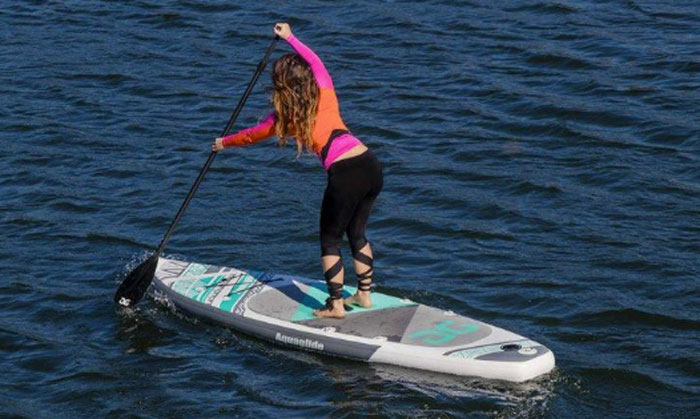SUP or Stand Up Paddle Boarding is regarded as one of the world’s fastest-growing activities. There are several reasons for this, but the most important is that it doesn’t take much material to get started and is a sport that everyone, regardless of age or skill, can enjoy. There are two basic types of SUPs to choose from: sup gonfiabile (inflatable surf) and rigid.
Since they’re so easy to travel, inflatable SUP boards were popular in the beginning. Inflatable boards, unlike their rigid cousins, collapse quickly and conveniently into a backpack. This makes bringing them on cruises or through an airport incredibly straightforward. They may be deflated and compressed to a very tiny size, making them very easy to pack.
While using a hand pump to prepare the inflatable SUP for riding takes some time, it shouldn’t take more than 5 or 10 minutes. One thing to remember is that acquiring the right amount of air pressure for the trip is crucial. The portion being stood on will typically bow if the inflatable SUP does not have enough air in it.
supgonfiabile (inflatable surf) durability is a hidden bonus. On shallower rivers and lakes, this has been proved to be especially true. If an inflatable SUP collides with a rock, it will almost certainly bounce off of the surface. If a rigid SUP collides with a rock, the bottom of the board may suffer a significant dent.
Guide On Buying A Stand-Up Paddle Boarding
The learning curve for utilizing a SUP is far less steep than learning how to surf, even if it takes time to perfect. However, it would be advisable to learn how to ride a SUP on flat water first; it won’t take long to go into the ocean surf if that’s what you want to do.
And where do you start when it comes to choosing a stand-up paddleboard? Well, it all depends on what type of paddling you want to engage in. You’ll need to consider where you’ll be utilizing your stand-up paddleboard. If you live near a lake, a flat water SUP might be a better option.
These boards are ideal for folks who are just getting started with SUP or who want a board that can surf tiny waves while also paddling over flat water (such as lakes). They typically range in length from 10 feet 6 inches (10’6″) to 12 feet 6 inches (12′). The widths range from thirty to thirty-six inches (36″).
If you’re mostly going to paddle across lakes, go as broad and long as you can, as this will provide you the most stability. You’ll need a shorter board that isn’t as wide if you want to go surfing. Remember, these types of boards are not made for serious flat water racing, or massive waves – they’re constructed so it’s feasible to have the best of both worlds.
If you’re only going to use your SUP to surf waves, go shorter (anything less than 10 feet – 10′ – is a good starting point). If you are fresh off a surfboard, then picking a narrow board should be completely acceptable, but for those merely starting, you want a substantial breadth to provide you with stability. Thirty to thirty-two inches (30″-32″) is a great starting point.


